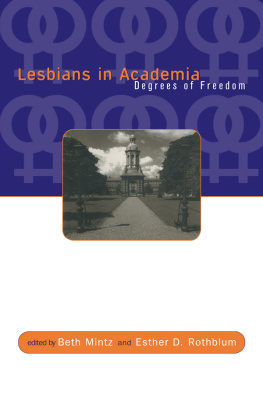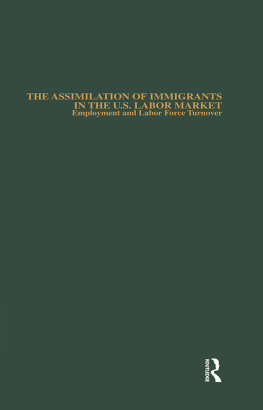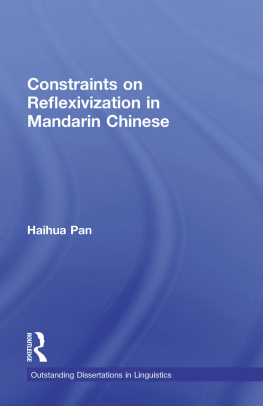GARLAND STUDIES IN
THE HISTORY OF AMERICAN LABOR
edited by
STUART BRUCHEY
UNIVERSITY OF MAINE
Immigrants and Cultural Adaptation in the American Workplace
A Study of Muslim Employees
Khalid M. Alkhazraji
First published 1997 by Garland Publishing Inc.
This edition published 2015 by Routledge
711 Third Avenue, New York, NY 10017, USA
2 Park Square, Milton Park, Abingdon, Oxon OX14 4RN
Routledge is an imprint of the Taylor & Francis Group, an informa business
Copyright 1997 Khalid M. Alkhazraji
All rights reserved
Library of Congress Cataloging-in-Publication Data
Alkhazraji, Khalid M., 1957
Immigrants and cultural adaptation in the American workplace : a study of Muslim employees / Khalid M. Alkhazraji.
p. cm. (Garland studies in the history of American labor)
Revision of the author's Ph. D. thesis, University of Mississippi, 1993, with a new preface and bibliography.
Includes bibliographical references and index.
ISBN 0-8153-2856-7 (alk. paper)
1. MuslimsEmploymentUnited States. 2. Muslims Cultural assimilationUnited States. 3. Alien laborUnited States. I. Title. II. Series.
HD8081.M87A45 1997
331.5dc21
96-39499
ISBN 13: 978-0-8153-2856-8 (hbk)
Dedication
I would like to dedicate this work to the beloved individuals who taught
me the most precious things in my life: faith and love.
Greenhaus and Callanan, authors of Career Management (1994) stated that "for most individuals, work is a defining aspect of life... our happiness and fulfillment can hinge on how well we are able to control the course of our work lives, and manage the effects of our work on other aspects of our existence" (p. ix). Indeed, the ability of a person to explore his/her work environment and be able to adapt to it are essential elements of the individual's career management. Th is book casts the light on selected variables that help individuals control the course of their life by being more comfortable at their work place. The factors presented in the framework can lead to desirable outcomes for individuals.
On the other hand, the ever increasing cultural diversity of the U.S. workforce is creating unparalleled challenges for today's managers. Because of these differences in ethnic backgrounds, values, lifestyles, and needs, further investigation into how minorities and immigrant employees in U.S. organizations adapt to their work environment is warranted. This timely book presents and tests a framework of employee acculturation processes within organizations. More specifically, the study investigates how U.S. Muslim employees adapt to U.S. organizational cultures. To the extent that this objective is realized, this study should help managers in different organizations manage the cultural diversity which exists in their work force by understanding the different strategies which minorities and immigrant employees use to adapt.
Contents
The book is organized into six major chapters. The first chapter provides an overview of the processes of cultural adaptation and relevance of the study, and discussing the importance of managing the cultural diversity in the U.S. workforce. The second chapter presents the theoretical foundations. Acculturation is defined and discussed, along with the dimension of collectivism-individualism. The importance of the religion factor is discussed. In the third chapter , the theoretical framework for employee's acculturation is presented. The study's variables are identified and hypotheses are generated. The fourth chapter states why U.S. Muslims are chosen as a potential sample for the study. It describes the procedure, sample, and statistical tools employed to test the proposed framework. The fifth chapter presents the study's results. Finally, the sixth chapter, provides a better understanding of the adaptation processes through a thorough discussion and interpretation of the findings.
Upon the completion of this work, I would like to express my sincere appreciation to those talented people whose encouragement and support made the publication of this book possible. I would like first to express my sineerest gratitude to Dr. William L. Gardner III, a Hearin-Hess Associate Professor of Management at the University of Mississippi, who frequently and generously shared his knowledge and his time with me through every step of this research. I would like to express my appreciation to Dr. Joseph G.P. Paolillo, Chairman of the Department of Management and Marketing, Dr. Jeanette S. Martin and Dr. John D. Johnson from the University of Mississippi for their support, encouragement and critical input.
My very sincere gratitude is extended to my parents, my grandparents and my sister for their love and support. In particular, I want to thank my father and my mother for being so patient and for enduring my long absence during my university education in the United States.
A special thanks to my wife and my son, who came into my life during the time when I was working on this book. Their existence in my life made me more determined and ambitious to be a successful person.
Finally, I would like to extend my appreciation to the government of my country, the United Arab Emirates, and to my employer, the United Arab Emirates University, for their moral and financial support to make this work possible.
Khalid Mohammed Alkhazraji is an Assistant Professor of Management and the Associate Dean of the College of Business and Economics at United Arab Emirates University. He obtained the Bachelor of Science degree in Business Administration from the University of Miami at Miami, and the Master of Business Administration (MBA) degree from Loyola University at New Orleans. In 1993, he was granted the degree of Doctor of Philosophy in Business Administration from the University of Mississippi (Ole Miss). His research focuses on organizational culture, career management, international human resource management, and entrepreneurship. His research has appeared in Journal of Management Communication and Arabic journals.
Immigrants and Cultural Adaptation in the American Workplace
I
Cultural Adaptation: An Overview
As the new world economic order emerges, cultural interaction and integration is taking place in every country, society, institution, and organization. This cultural amalgamation becomes possible with the help of modern communication, transportation, and the emergence of a world market economy. Therefore, the mobility of labor from one country to another in search of work opportunities has become a noticeable reality. Since the United States is the world's leader in the market economy, it obtains two-thirds of the world's immigrant workforce (Copeland, 1988). In Hie sixties, immigrants accounted for 11% of the U.S. population growth. While in the eighties immigrants were 39% of the U.S. population growth (Business Week, 1992).
Not only are the new immigrants becoming a new minority group in the U.S., but they are also joining other existing minorities into which they fit culturally. Therefore, a larger and stronger minority workforce is created. The existence of a large number of employees from other cultures in today's workplace suggests the importance and relevance of studying the adaptation, acculturation, and assimilation problems of minority groups and new immigrants within U.S. organizational cultures. It is becoming essential for U.S. corporations and multinational corporations (MNCs) to learn how to manage the cultural diversity of their workforce in order to maintain a competitive advantage (Cox, Lobel, & Mcleod, 1991; Copeland, 1988; Cox & Blake, 1991; Nelton, 1988; Schmidt, 1988).








